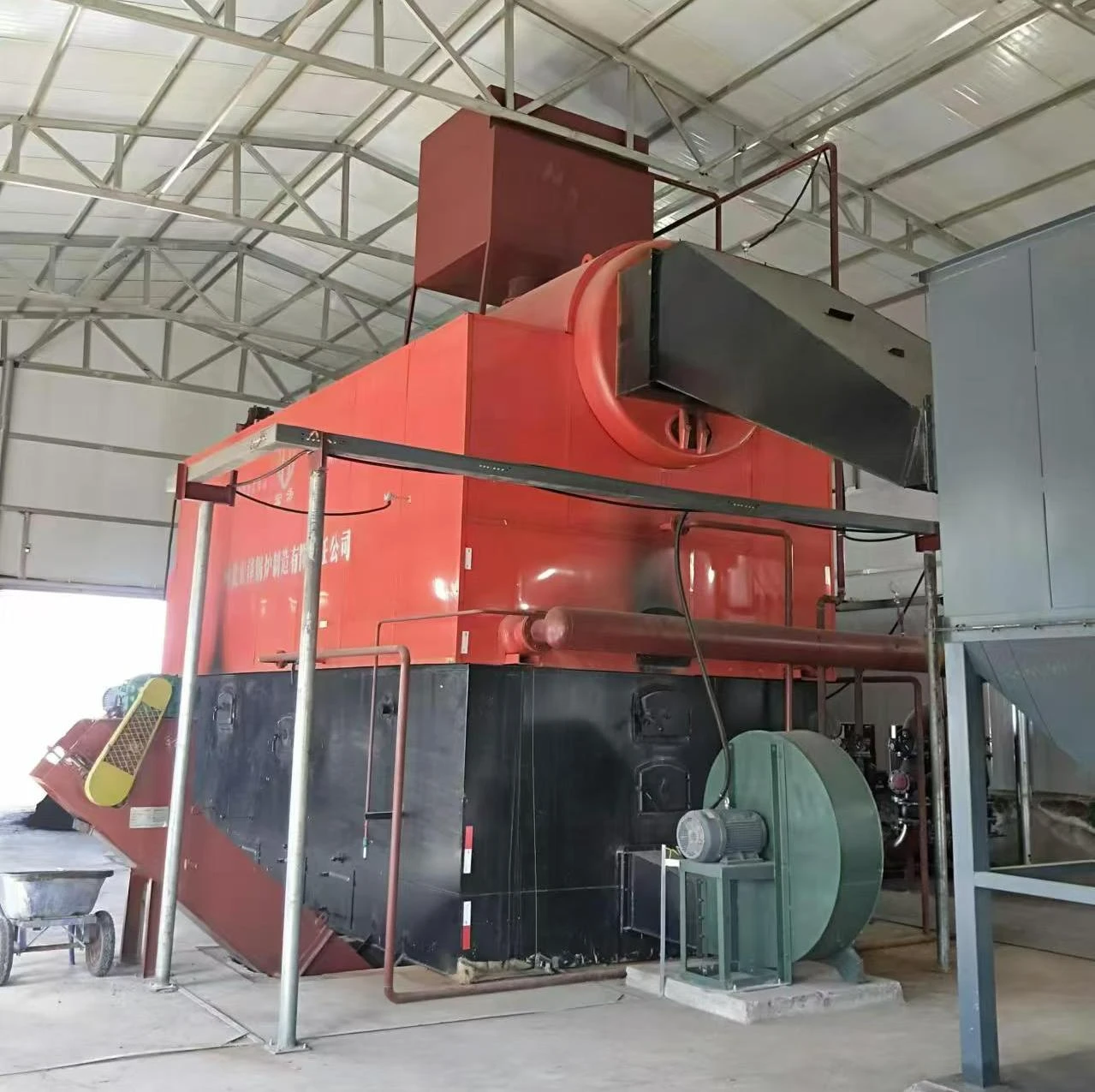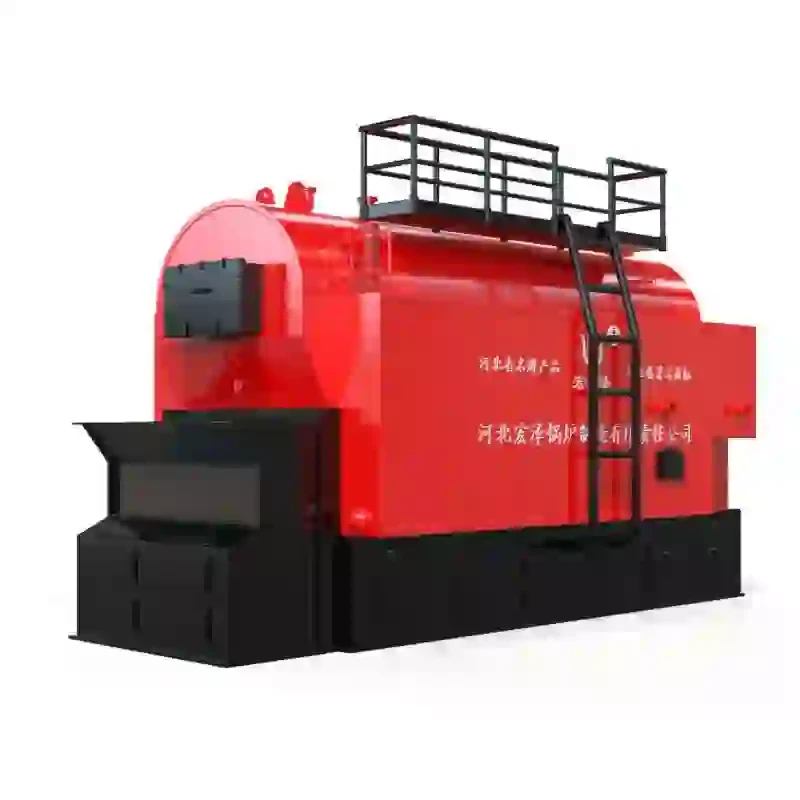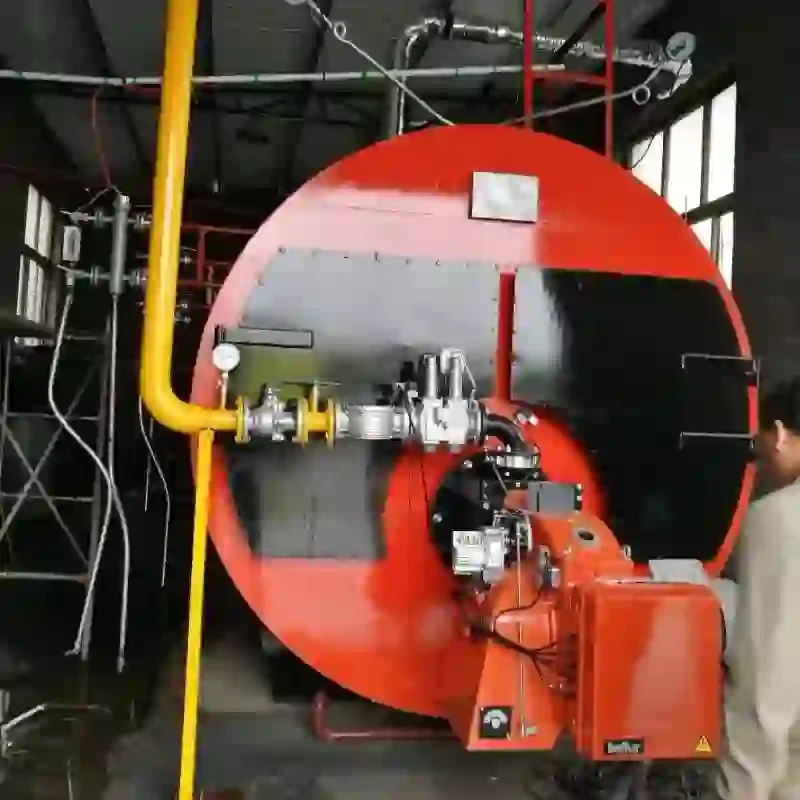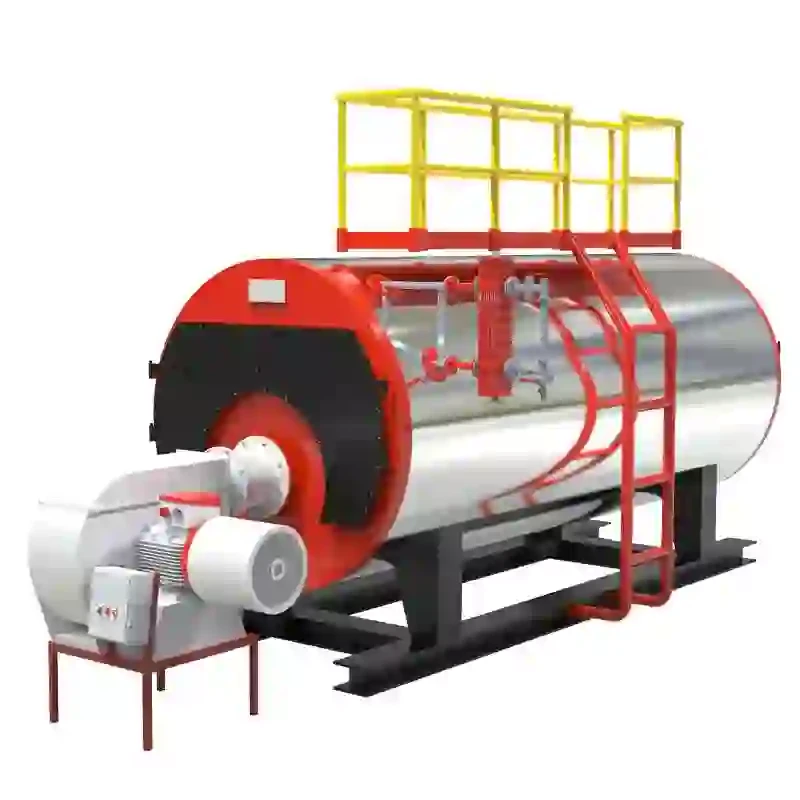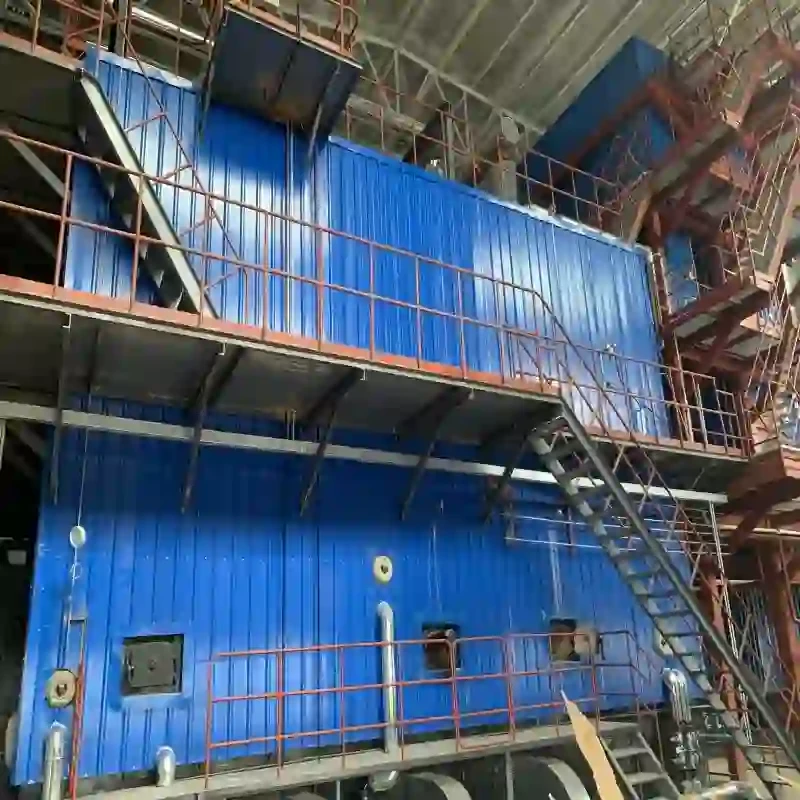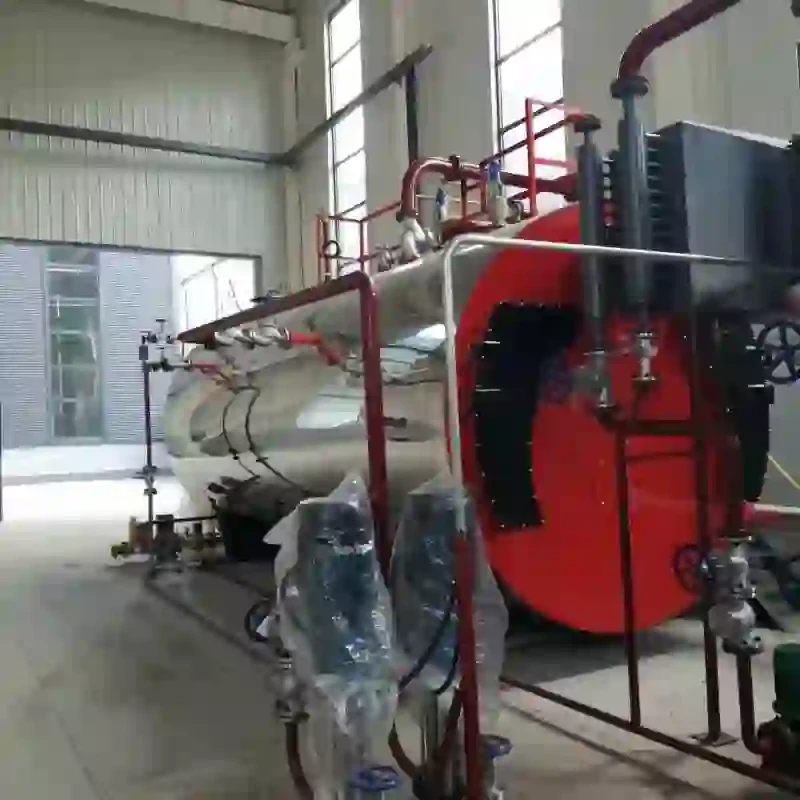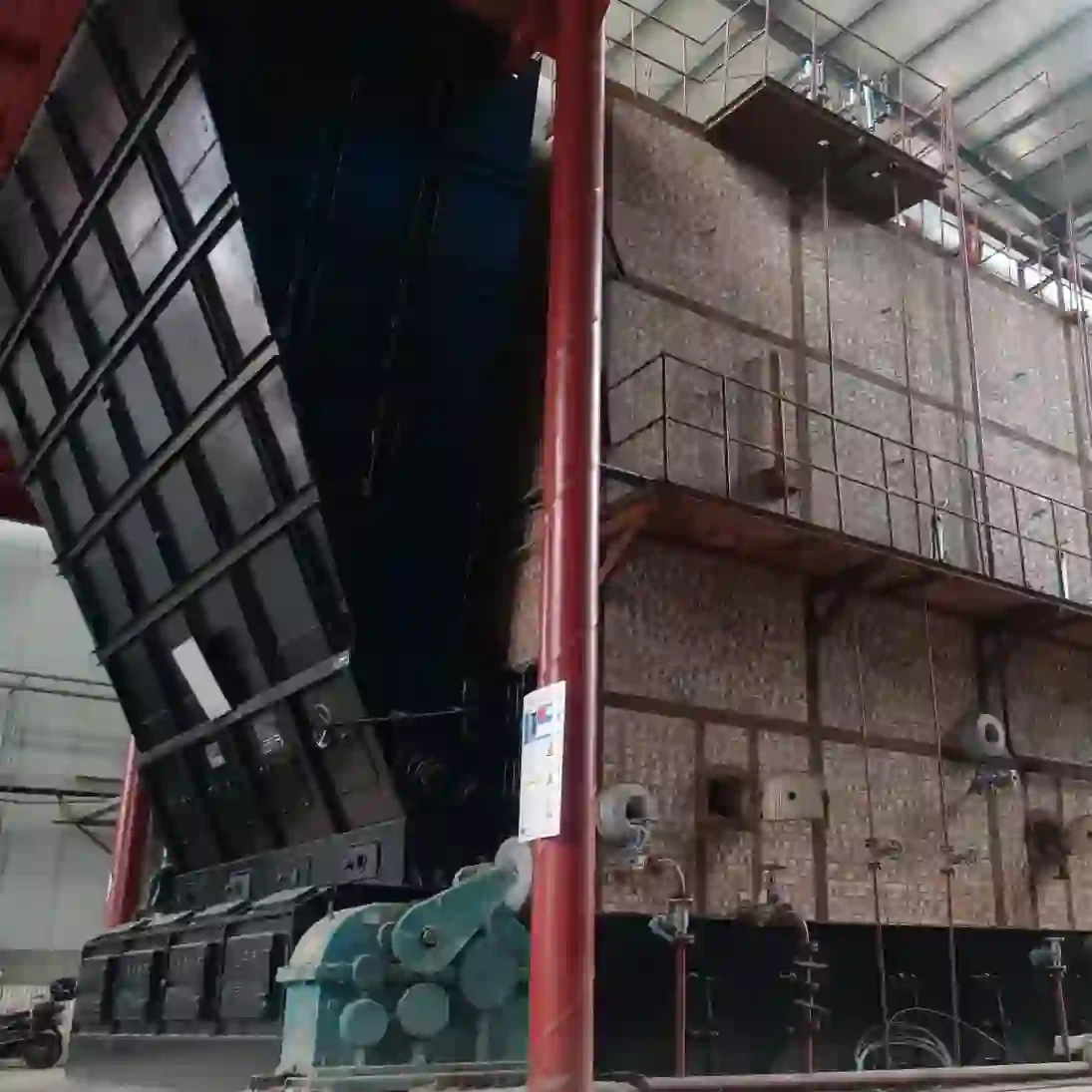
Sep . 22, 2025 13:35 Back to list
High-Efficiency Biomass Fired Thermal Oil Boiler | Eco-Friendly
Elevating Industrial Heating: The biomass fired thermal oil boiler
In the contemporary industrial landscape, the drive towards sustainable energy solutions and enhanced operational efficiency has never been more critical. The biomass fired thermal oil boiler represents a significant advancement in this pursuit, offering a robust and environmentally responsible method for achieving high-temperature process heating. This technology leverages renewable biomass fuels, providing an effective alternative to traditional fossil fuel systems, and is increasingly adopted across a spectrum of demanding B2B applications.
Industry Trends and Market Dynamics
The global industrial heating market is undergoing a profound transformation, propelled by stringent environmental regulations, fluctuating fossil fuel prices, and a growing corporate commitment to decarbonization. Biomass thermal oil boilers are at the forefront of this shift. Industry reports indicate a robust compound annual growth rate (CAGR) for the biomass boiler market, with projections pointing towards a multi-billion-dollar valuation in the coming years. This growth is primarily fueled by sectors seeking stable, cost-effective, and carbon-neutral heating solutions. The demand for advanced combustion technologies and heat transfer systems that can efficiently utilize diverse biomass fuels – from wood chips and agricultural residues to bagasse and palm kernel shells – is particularly strong. Leading biomass fired thermal oil boiler manufacturers are investing heavily in R&D to enhance fuel flexibility, improve combustion efficiency, and reduce emissions, ensuring compliance with global standards such as the EU's Industrial Emissions Directive (IED) and various national air quality regulations.
Technical Specifications and System Architecture
A biomass fired thermal oil boiler operates on the principle of indirect heat transfer. Unlike steam boilers, which generate high-pressure steam, thermal oil boilers circulate a specialized synthetic or mineral oil, often referred to as hot oil or thermal fluid, through a closed loop system. This fluid can achieve extremely high temperatures (up to 350-400°C) at atmospheric or very low pressures, thereby eliminating the risks associated with high-pressure steam and avoiding issues like corrosion, scaling, and freeze protection.
Key components typically include the combustion chamber, radiant and convection heating surfaces, an economizer, an induced draft (ID) fan, forced draft (FD) fan, multi-cyclone dust collector, air preheater, and the thermal oil circulation pump. Advanced control systems ensure precise temperature regulation and optimal combustion conditions, adapting to varying fuel characteristics and heat demands.
Manufacturing Process Flow of a Biomass Fired Thermal Oil Boiler
The production of a high-quality biomass fired thermal oil boiler is a meticulous process, integrating advanced engineering with robust material selection and rigorous quality control.
- Material Procurement & Preparation: High-grade alloy steels (e.g., SA-106 Gr. B, P22) are sourced, primarily for pressure parts, tubes, and headers, due to their excellent resistance to high temperatures and pressures. Structural components utilize carbon steel (e.g., Q235B, ASTM A36). Materials undergo ultrasonic testing and chemical composition analysis to confirm compliance with ASTM/EN standards.
- Tube Bending & Welding: Precision CNC tube bending machines form the complex serpentine coils and convection bundles, ensuring exact geometry and minimizing stress points. Welding processes, including shielded metal arc welding (SMAW) and gas tungsten arc welding (GTAW), are executed by certified welders, following ASME Section IX or EN ISO 9606 standards. All critical welds are subjected to non-destructive testing (NDT) such as radiography (RT) or ultrasonic testing (UT).
- Drum & Header Fabrication: Boiler drums and headers are often fabricated from seamless or welded pipes. Forging techniques are employed for critical connections, enhancing material integrity. CNC machining ensures precise dimensions for nozzle connections and other openings.
- Assembly of Pressure Parts: The various components – combustion chamber, radiant and convective sections – are meticulously assembled. This stage requires significant expertise to ensure proper alignment, spacing, and structural integrity of the heat transfer surfaces.
- Hydrostatic Testing: Once assembled, the pressure parts undergo hydrostatic testing, typically at 1.5 times the design pressure, to verify leak-tightness and structural integrity in accordance with boiler codes like ASME Section I or EN 12952.
- Refractory & Insulation Installation: High-temperature refractory materials are applied in the combustion zone to withstand extreme heat and protect the pressure parts. External insulation, such as mineral wool or ceramic fiber, is then installed to minimize heat losses and enhance energy efficiency.
- Ancillary Equipment Integration: Fans, pumps, control systems, fuel feeding systems, and emission control equipment (e.g., bag filters, multi-cyclones) are integrated and tested to ensure seamless operation.
- Surface Treatment & Finishing: Exterior surfaces are cleaned, primed, and painted with corrosion-resistant coatings to ensure longevity and aesthetic appeal, particularly important in harsh industrial environments.
Manufacturers adhere to international testing standards such as ISO 9001 for quality management, ISO 3834 for welding quality requirements, and EN 12953 for shell boilers. The typical service life of a well-maintained biomass fired thermal oil boiler is 20-30 years, showcasing its long-term investment value.
Representative Product Specifications
The following table provides typical parameters for a high-performance biomass fired thermal oil boiler, illustrating the technical capabilities and design considerations for industrial applications.
| Parameter | Typical Value / Range | Units |
|---|---|---|
| Thermal Capacity | 3 - 29,000 | kW (or 0.25 - 25 Gcal/h) |
| Design Pressure (Thermal Oil) | Low pressure to 0.8 | MPa |
| Max. Operating Temperature (Thermal Oil) | 320 - 350 | °C |
| Design Efficiency | ≥ 85% (with economizer ≥ 90%) | % |
| Fuel Type | Wood chips, pellets, rice husk, bagasse, palm kernel shell, forestry waste | - |
| Emissions (NOx) | Typically | mg/Nm³ |
| Control System | PLC-based with HMI interface | - |
| Thermal Oil Volume | Varies by capacity | Liters |
Application Scenarios and Technical Advantages
The versatility and efficiency of the biomass fired thermal oil boiler make it indispensable across a broad spectrum of industrial applications requiring precise, high-temperature heat.
Target Industries
- Petrochemical Industry: Used for heating reaction vessels, distillation columns, and reboilers, where stable, high-temperature heat without direct flame contact is crucial. The precise temperature control prevents product degradation and ensures process integrity.
- Metallurgy and Metal Processing: Applied in drying furnaces, annealing processes, and hot forming operations, demanding uniform and consistent heat to achieve specific material properties.
- Water Supply & Drainage / Wastewater Treatment: For heating sludge dryers, anaerobic digesters, and evaporation processes, where precise temperature management optimizes biological activity and accelerates drying rates.
- Textile Industry: Utilized in dyeing, drying, and calendering processes, providing the high temperatures necessary for color fixation and fabric finishing.
- Food and Beverage: For cooking, frying, baking, and sterilization, where hygienic and controlled heat delivery is paramount.
- Wood Processing (Plywood, MDF, Particle Board): Essential for hot pressing, drying, and veneer peeling, ensuring product quality and structural integrity.
Technical Advantages in Application Scenarios
- Superior Energy Saving: Modern biomass thermal oil boilers incorporate advanced combustion technologies, multi-pass designs, and economizers to recover waste heat, achieving thermal efficiencies often exceeding 90%. In one chemical plant application, switching from a natural gas boiler to a biomass-fired system resulted in a 30% reduction in operating costs due to lower fuel expenses and enhanced efficiency.
- Exceptional Corrosion Resistance: As the thermal fluid operates in a closed, non-pressurized system and does not undergo phase change, issues like internal scaling, steam trap maintenance, and condensate return system corrosion – common in steam systems – are entirely eliminated. This significantly reduces maintenance requirements and extends the lifespan of the heating system.
- High Temperature at Low Pressure: The ability to achieve temperatures up to 350-400°C without the high pressures associated with steam allows for simpler system design, reduced safety risks, and compliance with less stringent regulatory requirements compared to high-pressure steam boilers.
- Precise Temperature Control: The inherent properties of thermal oil enable very stable and accurate temperature control, critical for processes requiring narrow temperature bands to ensure product quality and process repeatability.
- Environmental Sustainability: Utilizing renewable biomass fuels significantly reduces net carbon emissions, aligning with corporate sustainability goals and contributing to a lower carbon footprint. This also provides an avenue for waste-to-energy solutions, transforming agricultural and forestry waste into valuable heat.
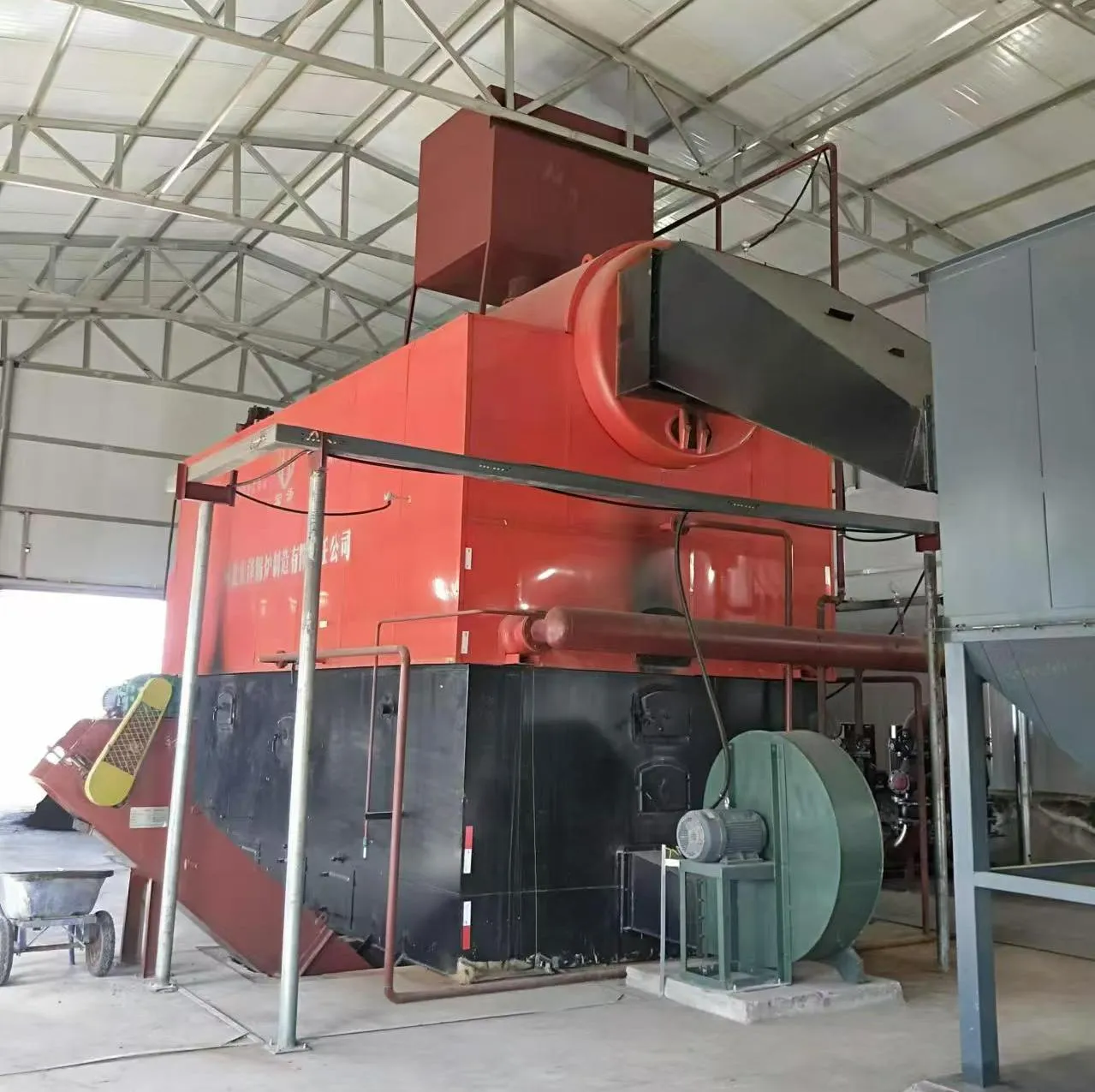
Figure 1: Typical installation of a biomass fired thermal oil boiler in an industrial setting.
Vendor Comparison and Customized Solutions
Selecting the right biomass fired thermal oil boiler manufacturer is paramount for ensuring long-term operational success and optimal return on investment. The market features several reputable manufacturers, each with unique strengths.
Key Considerations for Vendor Selection
| Factor | Importance | Description |
|---|---|---|
| Thermal Efficiency | Critical | Directly impacts fuel consumption and operating costs. Look for verifiable data and guarantees (e.g., >85%, >90% with economizer). |
| Fuel Flexibility | High | Ability to efficiently combust various biomass types (e.g., wood pellets, agricultural residues, forestry waste) is crucial for cost optimization and supply chain resilience. |
| Emissions Compliance | Mandatory | Ensure boiler design meets local and international emission standards (e.g., NOx, SOx, PM). Manufacturers should provide guaranteed emission levels. |
| Certifications & Standards | High | Verifies quality and safety. Look for certifications like ISO 9001, ASME, CE/PED, DOSH, EAC, etc., relevant to your region. |
| After-Sales Support & Service | Crucial | Availability of spare parts, technical assistance, preventative maintenance contracts, and rapid response times for troubleshooting. |
| Customization Capabilities | Variable | Ability to tailor boiler design, fuel handling, and emission control systems to specific site constraints and process requirements. |
Customized Solutions for Unique Industrial Needs
Recognizing that no two industrial operations are identical, leading biomass fired thermal oil boiler manufacturers excel in providing highly customized solutions. This bespoke approach ensures optimal integration with existing infrastructure and specific process demands. Customization options include:
- Fuel Handling Systems: Tailored designs for different biomass types, from automatic screw feeders for pellets to chain grate or vibratory grates for heterogeneous solid fuels.
- Emission Control Technologies: Integration of advanced particulate matter (PM) reduction systems (e.g., bag filters, electrostatic precipitators) and flue gas treatment technologies to meet stringent local emission limits.
- Control & Automation: PLC-based systems configured for seamless integration with plant-wide Distributed Control Systems (DCS), offering remote monitoring, predictive maintenance, and optimized operational parameters.
- Boiler Capacity & Design: Scalable designs to match precise thermal load requirements, whether for a small-scale facility or a large industrial complex, with options for compact footprints or modular installations.
- Heat Recovery Systems: Custom integration of economizers, air preheaters, and waste heat recovery units to maximize overall system efficiency and provide additional process heating or power generation.

Figure 2: Schematic representation of a biomass fired thermal oil boiler system, highlighting key components.
Real-World Application Case Studies & Customer Experience
The practical success of biomass fired thermal oil boiler systems is best demonstrated through concrete application examples and direct client feedback, underscoring their reliability and economic benefits.
Case Study 1: Large-Scale Plywood Manufacturing Facility (Southeast Asia)
- Challenge: A major plywood manufacturer required stable, high-temperature heat (280°C) for veneer drying and hot presses, while facing escalating fuel costs from traditional fossil fuels and an abundance of wood waste.
- Solution: Installation of a 10 million kcal/h (11.6 MW) biomass fired thermal oil boiler system designed to efficiently combust wood chips and sawdust generated as by-products. The system included an automated fuel feeding system and a multi-cyclone dust collector to manage particulate emissions.
- Outcome: The facility achieved a substantial 40% reduction in heating costs within the first year by utilizing internal waste streams as fuel. Operational stability improved significantly due to precise temperature control, leading to a 5% increase in product quality and reduced downtime. Client feedback highlighted the system's robust construction and the manufacturer's prompt technical support during commissioning.
Case Study 2: Chemical Processing Plant (Europe)
- Challenge: A specialty chemical producer needed to replace an aging natural gas thermal oil heater to comply with new carbon emission reduction targets while maintaining consistent process temperatures of 300°C for reactor heating.
- Solution: A 6 million kcal/h (7 MW) biomass fired thermal oil boiler, specifically engineered for biomass pellet combustion, was integrated into their existing thermal fluid loop. This solution featured an advanced PLC control system, automatically adjusting combustion based on real-time process demand, and an economizer for enhanced heat recovery.
- Outcome: The plant reduced its carbon footprint by over 7,500 tons of CO2 annually. Operational costs decreased by 25% through the switch to a stable, locally sourced biomass fuel supply. The client praised the boiler's seamless integration and the manufacturer's deep understanding of chemical process heating requirements, noting the reliability and low maintenance of the system over its initial five years of operation.
Ensuring Trustworthiness: Certifications, Support, and FAQ
Authoritative Certifications & Quality Assurance
Leading manufacturers of biomass fired thermal oil boiler systems adhere to rigorous international standards and possess essential certifications, validating product quality, safety, and environmental compliance. These often include:
- ISO 9001: Certified Quality Management Systems, ensuring consistent product quality from design to after-sales service.
- ASME (American Society of Mechanical Engineers): Compliance with Section I for Power Boilers or Section VIII, Division 1 for Pressure Vessels, critical for North American markets.
- CE Marking / PED (Pressure Equipment Directive): Mandatory for equipment sold within the European Economic Area, signifying compliance with essential health and safety requirements.
- EAC (Eurasian Conformity Mark): Required for products exported to member states of the Eurasian Economic Union.
- DOSH (Department of Occupational Safety and Health): Compliance for certain Asian markets like Malaysia.
Years of service (e.g., "over 30 years in boiler manufacturing") and a strong portfolio of key partner clients across diverse industries further attest to a manufacturer's authority and reliability.
Lead Time, Warranty & After-Sales Support
- Lead Time: Typical lead times for a customized biomass fired thermal oil boiler range from 12-20 weeks, depending on boiler capacity, complexity, and specific customization requirements. Expedited options may be available for critical projects.
- Warranty: Standard warranties typically cover 12-24 months from commissioning or 18-30 months from shipment, covering defects in materials and workmanship. Extended warranties and service contracts are often available for comprehensive coverage.
- After-Sales Support: Comprehensive support includes remote diagnostics, on-site technical assistance, preventative maintenance programs, spare parts availability, and operator training. A global network of service engineers ensures timely response and effective problem resolution, minimizing potential downtime.
Frequently Asked Questions (FAQ)
- Q1: What types of biomass fuels can be used?
- A1: Most biomass fired thermal oil boilers are designed for a wide range of solid biomass fuels including wood chips, wood pellets, agricultural residues (e.g., rice husks, bagasse, corn cobs), palm kernel shells (PKS), and forestry waste. Specific fuel flexibility depends on the grate and combustion system design.
- Q2: What is the primary difference between a thermal oil boiler and a steam boiler?
- A2: Thermal oil boilers use a heat transfer fluid that remains in liquid phase even at high temperatures (up to 350-400°C) and low pressures, eliminating the need for high-pressure operation, water treatment, blowdown, and condensate return. Steam boilers operate by boiling water to generate high-pressure steam, requiring extensive water treatment and carrying associated risks of high pressure.
- Q3: How are emissions controlled in biomass fired thermal oil boilers?
- A3: Emission control typically involves primary measures like optimized combustion (e.g., staged air, controlled fuel feed) to reduce NOx and CO. Secondary measures include particulate matter (PM) removal systems such as multi-cyclone dust collectors, bag filters, or electrostatic precipitators (ESPs) to meet stringent air quality standards.
- Q4: What maintenance is required for a thermal oil boiler?
- A4: Maintenance involves regular inspection of combustion chambers, flue gas paths, fans, and pumps. Critically, the thermal oil itself requires periodic analysis (e.g., annually) to check for degradation, acidity, and contamination. Unlike steam boilers, there is no need for water treatment or internal descaling, simplifying maintenance significantly.
Conclusion
The biomass fired thermal oil boiler stands as a highly efficient, reliable, and environmentally responsible heating solution for a diverse range of industrial applications. Its capacity to deliver high temperatures at low pressures, coupled with the utilization of renewable biomass fuels, offers significant operational cost savings, reduced carbon footprints, and enhanced process stability. With robust manufacturing processes, adherence to international standards, and comprehensive after-sales support, these systems represent a strategic investment for businesses committed to sustainable growth and operational excellence. As industries globally pivot towards greener alternatives, the biomass fired thermal oil boiler will continue to play a pivotal role in shaping the future of industrial heating.
References
- International Energy Agency (IEA). (2023). Renewables 2023: Analysis and forecast to 2028. IEA Publications.
- American Society of Mechanical Engineers (ASME). Boiler and Pressure Vessel Code, Section I: Rules for Construction of Power Boilers. ASME Standards.
- European Committee for Standardization (CEN). EN 12952: Water-tube boilers and auxiliary installations. CEN Standards.
- Biomass Energy Centre. (2022). Biomass Boiler Efficiency and Emissions. Forestry Commission, UK.
- United States Environmental Protection Agency (EPA). (2023). Air Emissions from Biomass Combustion. EPA Technical Reports.
-
Comprehensive Guide to Steam Boiler Installation Diagram – Global Best Practices and Future Trends
NewsNov.24,2025
-
A Practical Guide to the Selection of Steam Boiler for Industrial Efficiency
NewsNov.23,2025
-
Comprehensive Guide to Steam Boiler PDF Manuals and Their Global Impact
NewsNov.22,2025
-
Discover How Steam Boiler Videos Improve Industrial Training & Safety
NewsNov.22,2025
-
Comprehensive Guide to Wood Fired Steam Boiler Design – Efficiency, Applications, and Innovations
NewsNov.21,2025
-
Comprehensive Guide to Steam Boiler Working – Efficiency & Applications
NewsNov.20,2025
Related PRODUCTS






